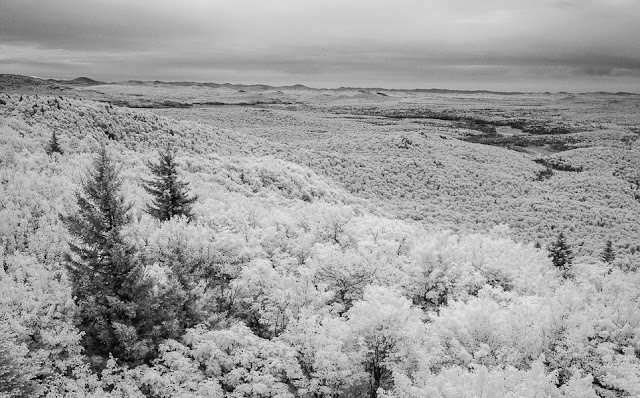Although one of the 4 trailheads is only about a half mile away, I hadn't hiked there since last August because I bought an e-bike and I went kind of nuts riding that instead of hiking. I have already ridden it several times this spring, but this morning I decided to revisit the section of the trail that I hike most often. This little fairy place has grown since I last photographed it. I don't know who places these things there, but I can guess.
At O'Malley Brook, I discovered that the bridge is missing. It may have washed out in the spring runoff. Note the cable around the base of the tree on the left. It was attached to the bridge, apparently because it had a habit of getting washed out in high water. Or they may have decided the bridge wasn't safe anymore. I noticed that it was rather 'bouncy' last summer.
Upstream, to the left, the trail crews have begun building the base for a new bridge and there were some very large cedar logs, which I speculate will be part of the new bridge.
I usually hike on for another mile plus, but while I was pondering how to cross the Brook, which was running a bit high, a couple of trail runners came by and ended up wading ankle deep to get across. There were some smallish logs (below) that someone with good balance (not me) might cross, but I declined and turned around because I wasn't prepared for soaking wet feet.
There's another small bridge over an intermittent stream shortly before O'Malley Brook that needs some work. It's still usable, but as you can see, it's in need of help.
The trail is maintained by the Laurentian Chapter of ADK. They did replace a similarly sad bridge at the start of the trail on Lenney Rd. late last summer. I saw them working on it when I was riding my bike past there last year.
It wasn't the hike I planned, but the weather was warm, high 60s, sunny, the white trilliums are starting to bloom, and it was a nice day. I enjoyed it.



























































